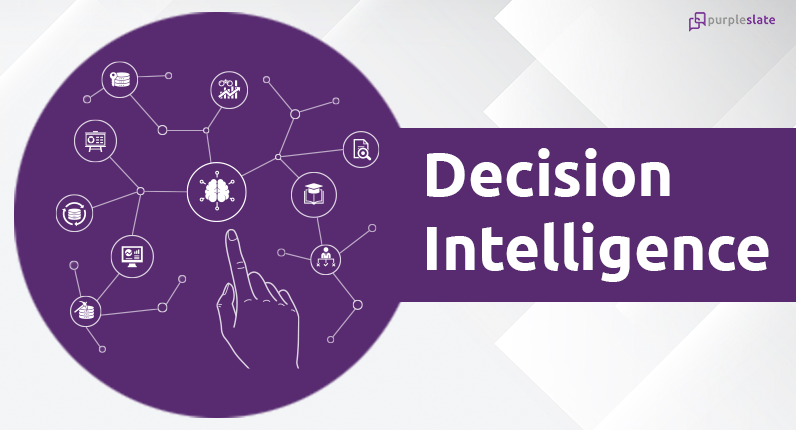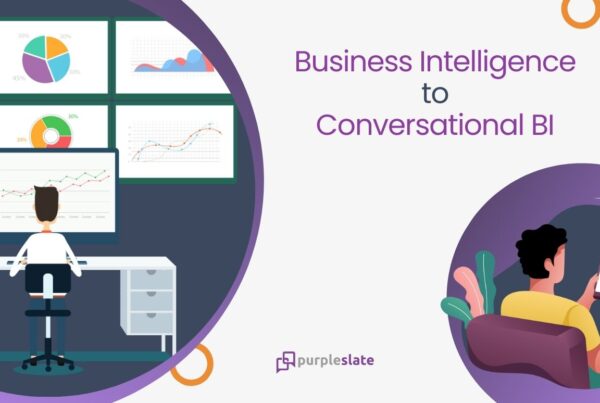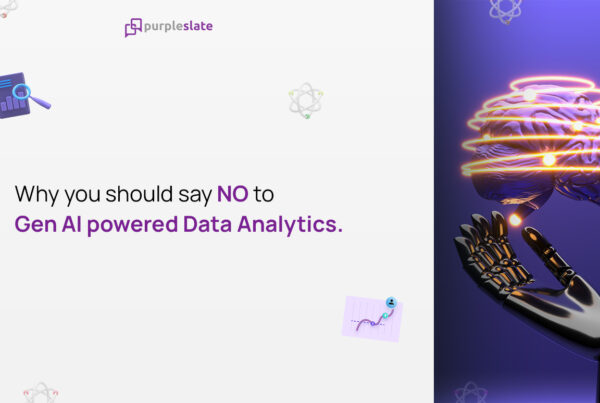
What is Decision Intelligence?
Gartner defines decision intelligence as “a practical domain framing a wide range of decision-making techniques bringing multiple traditional and advanced disciplines together to design, model, align, execute, monitor and tune decision models and processes.”
Decision Intelligence is one of the top three technology trends that is going to create a big impact on the markets by end of 2023 as per Gartner’s 2022 report. “It’s not a technology,” says Gartner, “It’s a discipline made of many different technologies.”
The advent of big data and its allied science and technology paved the way to derive information from the humongous data that is made available from various avenues, in short, Big data. Again the question arises, with the quantitative data are we still able to get quality information? The jazzy dashboards, charts, and digital visualizations from Business Intelligence (BI ) go overboard and become information overloading for strategic decision-makers. The requirement is to get the right data, again ‘right’ is a keyword and qualifier and it depends on the business, every changing ecosystem et al.
Understanding the Importance of Data-Driven Decisions
Even if we get the quality or right information available, the decision has to be finally made by one or more humans. The final choice or decision is made by human intervention. Though choice and decision are used interchangeably, they are not one and the same. ‘Choice’ is to pick from wide varieties that are available at your disposal with little or no information, while a decision is an informed choice.
Again the question loops back to what is that ‘informed’ choice? Informed choice is alternatively called Decision Intelligence. It is a combination of science, technology, and humanity that contributes to making consistently high-quality informed decisions with the help of technology that derives information from the prevailing ecosystem.
Decisions, decisions, and more decisions. In this fast-paced environment, being able to make quick decisions gets one ahead of competitors.
Every day, in any organization across all the managerial and leadership positions, they are expected to make a multitude of decisions left, right, and center. The bigger the size of the organization, the challenges in data-driven decisions increases proportionally. The ability to respond quickly to the ever-changing environment is the primary skill for any successful leader.
Here the requirement is to provide more comprehensive decision support platforms that augment the existing 2D dashboards from business intelligence and analytics by leveraging sophisticated tools enabled by artificial intelligence and machine learning.
Overcoming Biases with AI-Powered Decision Making
Every person has a circle of competence. Every decision made is the outcome of a person’s knowledge and circle of competence. If a decision is augmented with a wide variety of people’s circle of competence, the collective decision-making skill is going to be enhanced manifold.
One of the biggest challenges in a collective decision-making process is the team running into cognitive and emotional biases. This will have a big impact on the outcomes of the decisions. People will seek out data that supports their biases, more like reverse engineering. When people analyze the data, they look at it through the lens of their experience which may result in flawed conclusions. The algorithms in the decision intelligence system are not swayed by those biases, it evaluates the available facts objectively and provides an informed choice.
AI systems used in the Decision Intelligence system look at the data more closely than conventional data analytics systems and detect any unseen patterns or abnormalities. The identification and elimination of potential abnormalities will have a big impact on the decision-making process and enhance the skill with more unseen data patterns.
AI decision-making systems enhance to speed up the process entirely by processing large amounts of data that are scattered. it helps the organization to make the right decision in a shorter period of time.
Propelling 10X Organizational Growth with AI-enabled Decision Intelligence
Traditionally we have the rule-based system that gives linear growth for any organization. Even when looped back, it will be an incremental change. But for exponential growth, we need to have the edge with AI-based decision-making systems. With the machine learning systems in place, they scour for a pattern across the data with the looped back attribute and get back with a multitude of opportunities to grow exponentially. Decision Intelligence systems backed by AI systems constantly upgrade their algorithm with machine learning.
Most of the time, decision trees become complex, increasing the risks of getting decisions wrong. Decision Intelligence systems might not be able to replace all the decision-making, but they might be able to augment it. It concentrates on both the positive and negative attributes of success. While positive attributes enhance the success rate, negative attributes mitigate the failure rates.
If a company does not have real historical data to start with for implementing a Decision Intelligence system, they can look at using synthetic data. It enables companies to identify black swan events or unusual scenarios. According to Gartner by 2024, 60% of the data used for the development of AI will be synthetically generated, now it stands at 1%.
Understanding the Underlying Challenges in a Decision Intelligence System
One has to understand that the quality of the decision outcomes and the quality of decisions are not one and the same. Sometimes, a bad quality decision might bring a successful outcome if one is lucky, but it is a one-off scenario. It can’t be looped back into the decision system and can not measure the decision and its outcome. It becomes unsustainable in the longer run.
Collecting the outcomes of these decisions and linking them back to the decision-making system is challenging. But once the decision intelligence system is in place and the outcomes are looped back, the outcomes become more effective and efficient.
Another facet to the problem is with the rapidly changing ecosystem, we can’t just rely on past data to predict the future trend. Covid pandemic, which came out of the blue, became a game-changer and the majority of the decision-making attributes got changed.
Decisions purely taken by data-driven recommendations at certain times hit us hard and the need for AI-driven decision intelligence becomes paramount for an organization’s existence. But most of the time, even when AI predicts rightly, human instincts take the foreground and discard the recommendations, causing considerable loss to the organization.
Decision Intelligence is the Future of Corporate Decision Making
Is decision intelligence required for start-ups, and SMEs? The answer is obviously yes. Even to consider decision intelligence as a viable option itself is a half victory. Many might still be doing it without calling it by the name, Decision Intelligence. Recommendation engines are one miniature or subset of the DI system. They may not have the necessary attributes but comes closer to it. Let us not think of DI as a full-fledged system implemented across the organization. We can just start using DI in one of the crucial, say marketing department, and expand it to other departments.
For a decision intelligence system to be successful, the underlying strategy needs to be right. The person who implements requires an in-depth understanding of the organization, the ecosystem it operates, the resolve to evaluate both successful and failure outcomes, and the most important of all is to loop back to the decision-making process.




